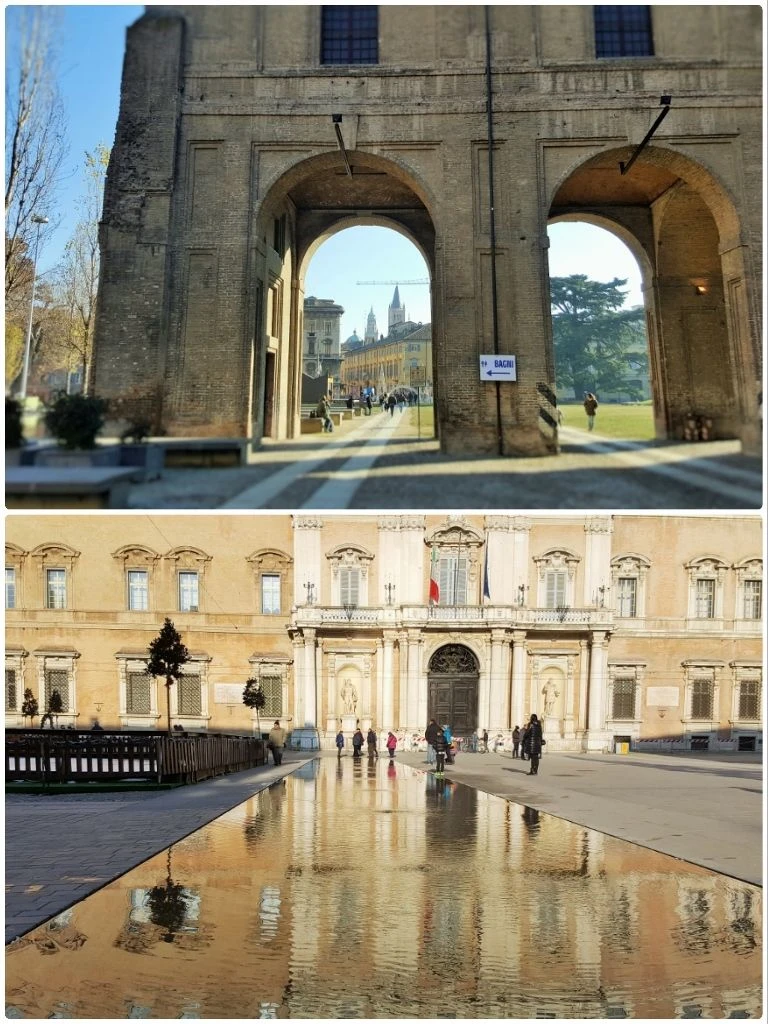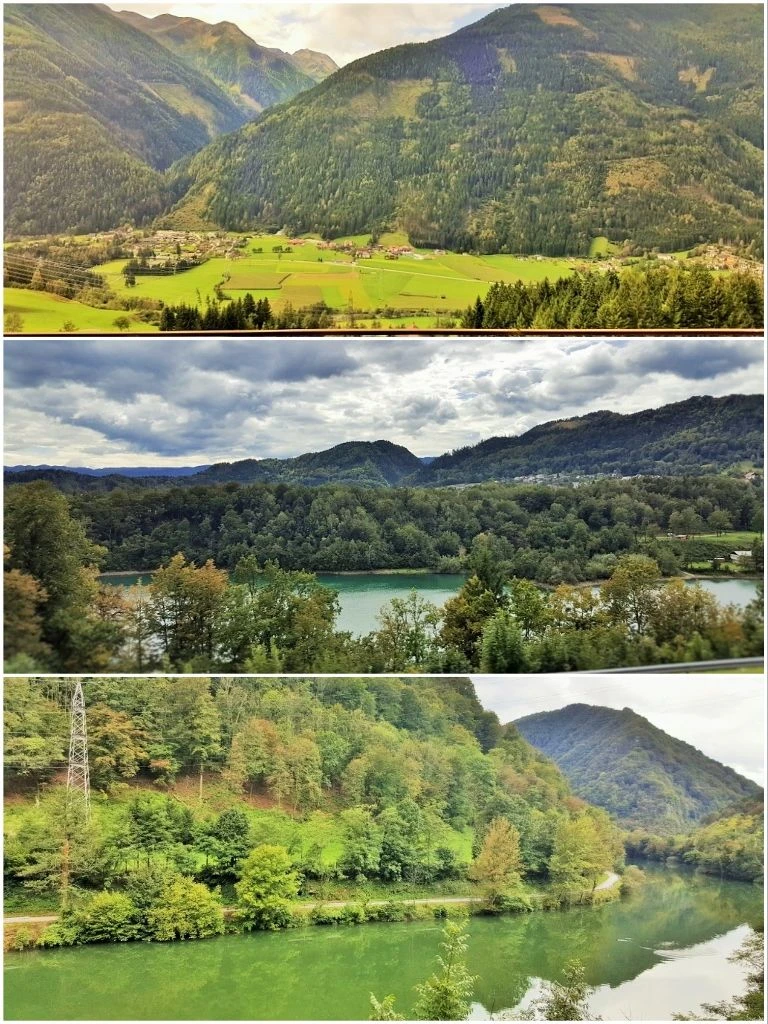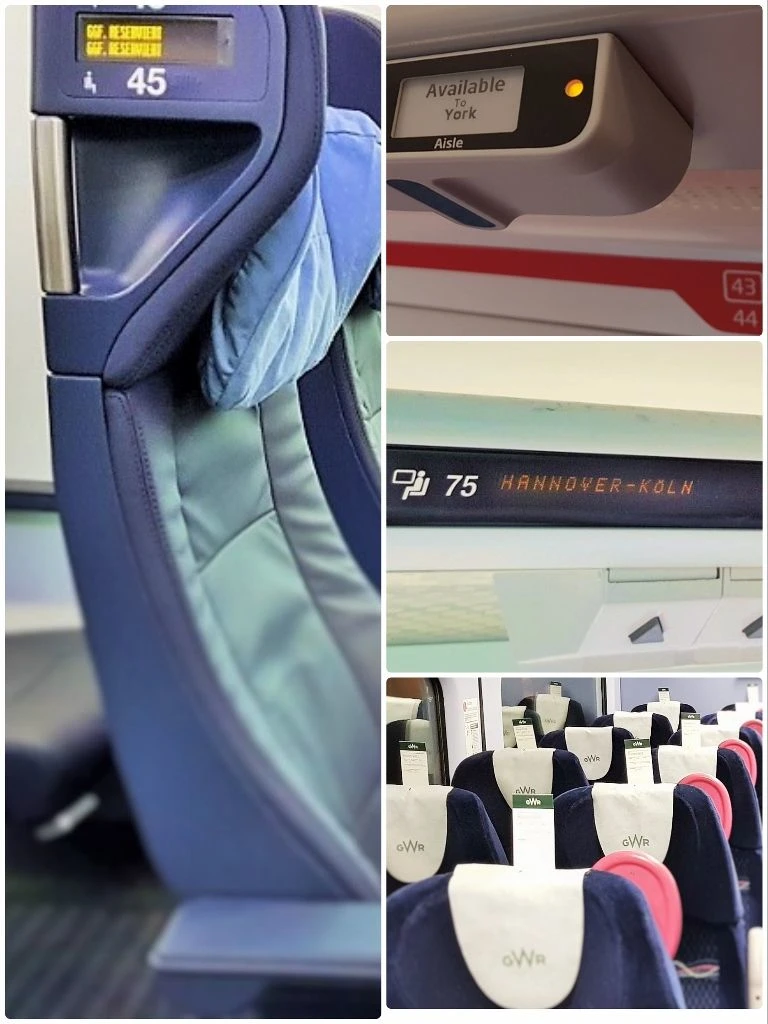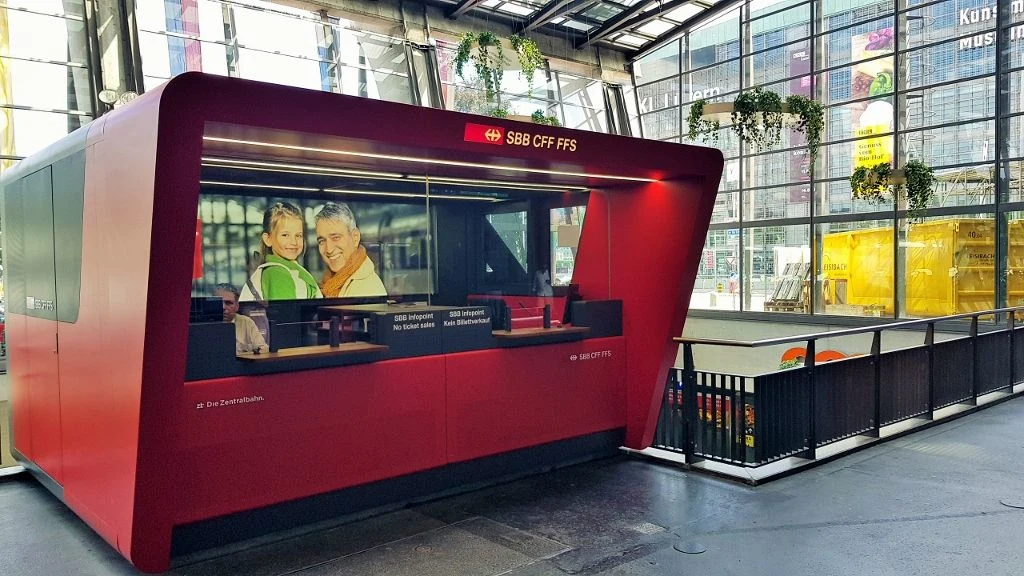Related Content
Content

Tips & Ideas to make the most of InterRail and Eurail passes
Tips and suggestions for making the most of using Eurail and InterRail passes to explore Europe, by avoiding complications and enhancing the journeys
Share
So you've planned your rail pass adventure and now you've embarked on your trip of a lifetime
These tips below, which stem from personal experience, will both help enhance your itinerary and ensure that your travels are comparatively stress-free.
1. Avoid assumptions
Seeing Europe by train is obviously wonderful, but it can also be a tad bizarre and that’s partially because each country in Europe applies its own rules and logic to both how it operates its trains and how you can use Eurail and InterRail passes.
Just because you can hop on any train in one country with your pass doesn’t mean you can do the same in another etc.
Not paying a reservation fee before boarding trains on which they’re compulsory is usually a scenario best avoided; claiming ignorance won’t win over a train conductor; though if you have tried to reserve a seat on a daytime train service with mandatory reservations, but have been unable to obtain them pre-boarding, you MAY be able to purchase a reservation from a train conductor.
This paying the conductor scenario won't be an option when travelling in a couchette or a sleeping cabin on a night train!
Don’t let this put off making that trip of a lifetime as there’s now a handy guide as to how you can use a Eurail or InterRail pass in all of Europe’s most popular countries.
2. Break journeys:
Some railway routes are akin to bejeweled necklaces, with numerous delightful places in which to spend a few hours between trains.
Point-to-point tickets, particularly those that are seat specific, nearly always don’t allow for stopping over between the start and end points of journeys – but rail passes do!
Some examples:
(1) Stop over in Modena AND or Parma when travelling between Milan and Bologna by train,

(2) Seeing Haarlem and Delft when travelling from Amsterdam to Rotterdam,
(3) Stop over in Antwerpen when travelling between Bruxelles and Amsterdam
(4) Spend time in Padova/Padua and/or Vicenza when taking the train from Verona to Venezia/Venice.
On our To Do schedule is a lovely long list of journeys like these.
3. Maximise Scenic Journeys:
You’ll be spending a lot of time on trains, so a rail pass itinerary can be hugely enhanced if you can see something wonderful out of the window, or can be otherwise wowed by the journey.
If you’re not the type that find landscapes or feats of engineering thrilling, this advice will mean little, but if you do, here are four lovely suggestions:
(1) Avoid making overnight journeys on particularly scenic routes:

The length of journeys such as Munich to Zagreb and Zurich to Vienna can, at face value, make the overnight trains seen like a good option.
But these routes across Austria are some of the most beautiful taken by any train, so landscape lovers should avoid travelling along them in darkness - and this is just one example.
(2) Follow our advice on which side of the train to sit on, in order to maximise the views:
At the risk of stating the obvious, when a railway line is beside a river, the sea, or a lake, if you’re sat on the other side of the train to the water, you won’t seeing anything remarkable.
But this can also be true of many mountain journeys, railways tend to embedded in valley walls, so you can only see the views over the valley from one side of the train and not the other.
Hence we strive to include which sides of the train have the best views on our journey guides - a great reason for checking then out even though you won't be buying tickets!
(3) Don’t remain in your reserved seat if it's on the 'wrong' side:
This tip risks disapproval from train conductors, but if you are travelling on a scenic route on a train with compulsory reservations - it’s also stating the obvious that you’ll only have a 50% chance of your seat(s) being on the side of the train that has the best of the views.
You virtually always have to leave this seat assignment to fate, in the rare instances when you can select a specific seat, there’s usually no way of gleaning whether you will be sat on the left or the right during a journey.
However, if you haven’t struck lucky and don’t have a seat on the scenic side, you don’t have to miss out on the views.
The trick is to be in your assigned seat when the conductor comes through the train to inspect the tickets and reservations.
But after that, if there are spare window seats on the scenic side of the train, you can temporarily move over.
Then head back to your seat before the next station call and avoid the embarrassment of being sat in a seat that has been assigned to someone about to board.
Or go to the bar/bistro car and have a drink or snack watching the world go by, most bar coaches will have windows on both sides of the train.
(4) Don’t always take the direct route:
A plus of using a rail pass can be the fact that you can change trains.
If your primary criteria is getting to your destination as fast as possible, this suggestion will seem perverse, but stunning landscapes and fast railways are very rarely compatible.
The express trains dive into tunnels or follow new straighter routes, avoiding valleys and coastlines.
Often, trains that are now slower in comparison, still take the more scenic routes and you can hop on these trains with your rail pass.
The slower alternative routes are much more scenic in EITHER direction when travelling between these cities.
Milano to Zurich: instead follow this route: Milano → Tirano → Pontresina → Samedan → Chur → Zurich
Koln to Zurich: instead follow this route: Koln → Karlsruhe via Koblenz → Singen → Schaffhasuen→Zurich
Milano to Basel: instead follow this route: Milano → Brig → Bern via Kandersteg → Basel
Zurich/Basel to Milano: instead follow this route: Zurich or Basel to Cadenazzo → Milano
Paris to Koln: instead follow this route: Paris Est → Luxembourg → Koblenz → Koln
Koln to Basel: instead follow this route: Koln → Koblenz → Luxembourg → Strasbourg → Basel
Milano to Roma: instead follow this route: Milano → Genova → La Spezia → RomaBarcelona to Marseille: instead follow this route: Barcelona → La Tour De Carol → Toulouse → Marseille
Salzburg to Vienna: instead follow this route: Salzburg → Villach → Wien/Vienna
4. Travel on Swiss railways:
Switzerland is pricey, but that’s why using Eurail and InterRail passes there can be big money saver.
Some Swiss train journeys are comparatively expensive and particularly high ticket prices are payable on many of the independent railway lines that operate some of the most spectacular journeys on the planet.
However, InterRail and Eurail pass users can travel at no extra charge on many of the most incredible routes of all, including:
(1) The ‘Golden Pass’ route Montreux – Luzern on MOB and ZB trains.
(2) The route of the Bernina Express (St Moritz - Tirano on RhB trains)
(3) The route of The Glacier Express (St Moritz - Zermatt on RhB and MGB trains)
If you want to use your pass to travel on The Bernina Express or Glacier Express trains, you only have to pay the reservation fees = big savings compared to the cost of tickets!
A myth worth busting is that the railway lines on which Eurail and Interrail passes aren’t valid, must be so much MORE spectacular than those on which they can be used.
5. Finding available seats:
Tips for finding spare seats if you haven’t made an optional reservation:
If you will be joining a train at its starting point:
To maximise your chances of finding a spare seat(s) it pays off to be one of the first passengers to board, so aim to be at the station, waiting ready for the departure to be confirmed, at least 20 mins before your train is due to leave.
Work out where the 1st or 2nd class coaches are and choose a coach in the middle of each of these parts of the train; the logic being that the reservation systems tend to work backwards or forward through a train when assigning seats.
So don’t assume that more seats will be available at the front of the train, but particularly avoid boarding by some of the first sets of doors that you see; you want to reduce your number of competitors in the spare seat challenge, so take a less obvious path and board further along the train.
Then when you board, stow your bags in the first luggage rack you’ll see, if need be you can move them later on, but for now, you’ll want to avoid impeding your search for a seat.
Train operators use either electronic info displays or paper labels by each seat number, to display which seats are either available or occupied.
No paper label means an available seat, but if all the seats you can see are labelled, then check between which destinations the seat is reserved.
If it doesn’t have the station where you’re boarding on it, then you can claim it, being aware that you’ll have to give it up at the station where the reservation has been made from – but don’t worry about that for the moment.

Similarly the electronic text will be specific to each seat number, so no text at all will ordinarily mean that the seat(s) is available.
But if you can see text on the display, don’t assume that the seat ISN'T free, it may be indicating that the seat is reserved from a subsequent station.
Or it may be telling you that a seat is in fact available – on ICE trains ‘bahn comfort’ means an available seat.
Also take your time with reading this information, yes your fellow passengers will likely now be in the aisle behind you, impatient to get to their seat(s), but you’re entitled to look for one of your own.
If you can’t find anything but a seat(s) that isn’t absolutely ideal, perhaps because it isn’t by a window, or forward facing, or available for an entire journey, still claim it.
Then once the train has departed and all of your fellow passengers have settled down, leave something behind to stake your claim and then head off to search through the train, to see if you can find a better seat, which does meet all your criteria.
If need be check to see where your fellow passengers, who have reserved, will be leaving the train - when they do so, it’s likely you’ll be able to transfer to their seats.
If however, on boarding you discover that no seats are free at all in the coach/carriage that you have searched through, don’t give up hope.
For some reason many people that have booked a journey and made a reservation, don’t actually board the train, so those seat(s) which seemed to be reserved, may be available after all.
Wait a few minutes after the train has departed, to make sure a late boarding passenger won’t be heading to their seat, and then check to see if such seats can be claimed by yours truly instead.
Though what you want to avoid is a scenario, in which you claim a reserved seat in the hope that the person who has booked it doesn’t ultimately join the train, but then they turn up at the last moment; if you have to give up the seat in this scenario, all of the other options for finding a spare seat could have disappeared.
If there’s still nothing free in the coach/carriage you have chosen at random, then leave your bags where they are for the moment – and head off to check if there are seats in another part of the train.
If you will be boarding a train at an intermediate station:
Your first priority is to put some distance between you and the other travellers waiting to board, so that you’re not competing against them for available places.
Use any available info on the platform/track that will show which part of it the train will occupy when it arrives; you want to head along the platform/track away from the access point, most of your fellow travellers will be reluctant to move too far.
Then when you board don’t assume that an unoccupied seat is in fact available, it may be reserved from the same station, so check first.
On a busy train, keep an eye on this seat, as the traveller who has reserved it may not board after all.
Also if you see something which suggests the seat is available, but the seat is already occupied, it doesn’t mean that you can claim the seat; the person already in it, has done so, before you had the opportunity.
6. Don't rush for the station exit:
You’ve just arrived in a location you’ve long dreamed of visiting and you can’t wait to see it, or it’s late and you're tired, all you want to do is be in your bed for the night as soon as.
However, here are three reasons why we recommend trying to resist the temptation to rush away from the station, when you arrive somewhere for the first time by train.
(1) Stopping by an Information Desk or checking the timetable sheets, to confirm that all is well with the next train you will be taking on your trip, can be a big stress-saver.

Confirming the details of your next journey, including from where* and at what time your train will be leaving, will take the pressure off making your next departure.
(2) *Some cities including Avignon, Basel, Budapest, Cologne, Florence, Glasgow, Lille, London, Madrid, Manchester, Milan, Paris and Turin have multiple stations which serve different, specific routes and destinations.
Long distance trains can also call at more than one station in Berlin, Hamburg, Edinburgh, Genoa, Lyon, Munich, Rome, Venice and Warsaw.
So avoid assuming that the station where you have disembarked from a train, will also be the station that your subsequent train will be departing from.
(3) Also take a look at the Reservation desks, particularly if you have just arrived at a hauptbahnhof in Germany - if the waiting time is short, it can be an optimum time to make any reservations for journeys that you now want to add to an itinerary.
7. More time pre departure:
These nuggets of advice aren’t exclusive to rail pass users, but being a tad too casual with timings has tripped me up time and time again when using a rail pass.
If I’m using departure specific tickets for a journey, I’ll aim to be at a station an hour before the train leaves.
However, the freewheeling nature of using a rail pass means it’s all too easy to assume that getting to the station and boarding the train won’t be a problem
But I have ended up running for a train when:
(1) I got confused about how to pay for a coffee.
(2) The information on a departure screen had the wrong destination on it.
(3) Blithely assuming that the scrolling text on the departure screen, which wasn’t in English, could be ignored.
(4) The tram I was taking to the station got stuck in a tram jam.
(5) Initially heading off in the wrong direction away from the station on the metro/subway.
If you will be taking a local train or other public transport to the station, double the time that you think you will need to make the transfer.
So aim to be at the station around 30 mins before your train departs and allow more than 30 mins if you want to grab a coffee or breakfast; particularly if you have gambled on seats being available on a train service with optional reservation.
Then you can use up those extra minutes if you do encounter a problem.
Even if nothing untoward has tripped you up, finding your train can be less obvious than you’d assumed, it may be departing from some distant part of the station etc
Our other Eurail and InterRail guides:
Please support ShowMeTheJourney
This second version of ShowMeTheJourney is exciting and new, so we are genuinely thrilled that you are here and reading this, but we also need your help.
We’re striving not to let anything get in the way of providing the most useful service possible, hence a facility has been set up with DonorBox which can be used to support the running costs and make improvements.
Instead of advertising or paywalls, your financial support will make a positive difference to delivering an enhanced service, as there’s a lot of ideas which we want to make happen.
So if you have found the info provided here to be useful, please go here to say thank you.

Simon Harper
I wanted to share my passion for train travel and explain how anyone can take the fantastic journeys I have taken.

This is one of more than 100 train travel guides available on ShowMeTheJourney, which will make it easier to take the train journeys you want or need to make. As always, all images were captured on trips taken by ShowMeTheJourney.
This second version of ShowMeTheJourney is exciting and new, so we are genuinely thrilled that you are here and reading this, but we also need your help.
We’re striving not to let anything get in the way of providing the most useful service possible, hence a facility has been set up with DonorBox which can be used to support the running costs and make improvements.
Instead of advertising or paywalls, your financial support will make a positive difference to delivering an enhanced service, as there’s a lot of ideas which we want to make happen.
So if you have found the info provided here to be useful, please consider saying thank you.









